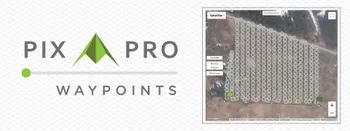Pixpro fotogrametrijos tinklaraštis

Pixpro Waypoints - Automatiniai fotogrametrijos skrydžiai naudojant naujausius DJI dronus
Naujausi DJI dronai yra pačios gebiausios skraidančios kameros rinkoje. Jei jums reikia tokio įrankio ar kompetentingos mašinos neformaliam kūrybai - DJI Mavic 3, DJI Mini 4 ir DJI Air 3 serijos dronai yra geriausi.

Komercinio stogo skenavimas ir inspekcija
Šis tinklaraščio įrašas dalinasi realaus pasaulio pavyzdžiu apie didelę stogo tikrinimo darbą. Tikslas buvo gauti bendrą komercinio pastato stogo skenavimą pradinei inspekcijai ir apžvalgai.
Pasiruošę pradėti savo projektą?
Galite rinktis iš trijų skirtingų planų arba teirautis individualaus sprendimo, kuriuo galėsite Jums reikalingą nuotraukų kiekį!
Nemokamas 14 dienų bandomasis laikotarpis. Galite atsisakyti bet kada.
Sveikiname prisijungus Pixpro
Prisijungti
Ir prisijungti prie savo paskyros.
.svg@webp)